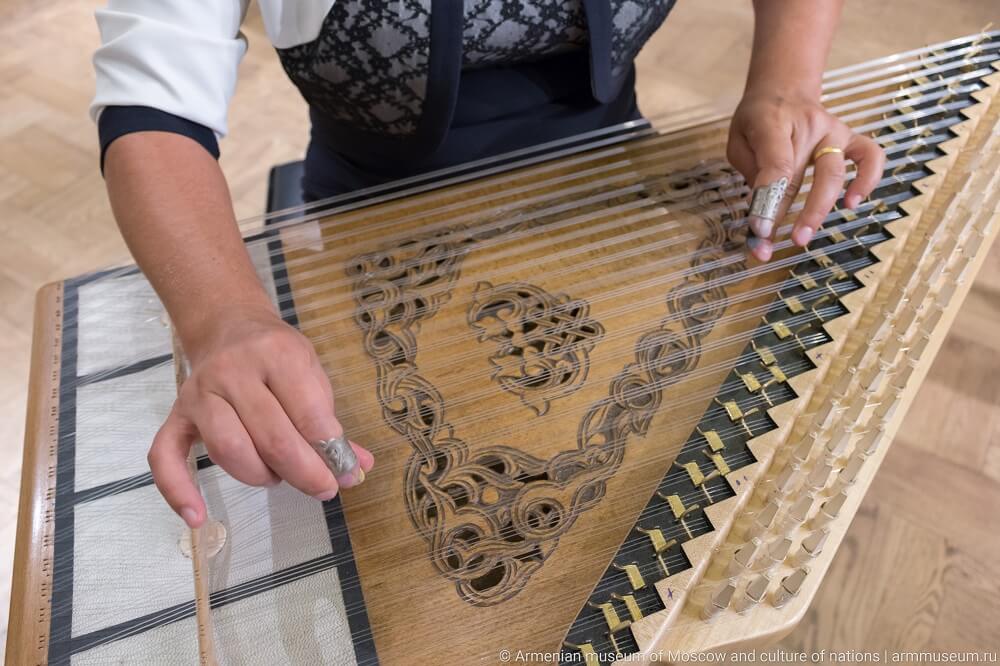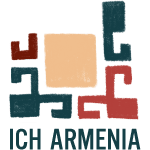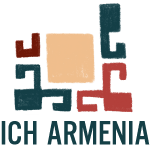
It has been known in Armenian culture since the Middle Ages. There are evidences of its prototypes in the works of Hovhannes Draskhanakerts (10th century) and Hakob Ghrimets, Tamburi Harutyun (18th century), in medieval miniatures, as well as tombstones from the 16th-18th centuries. Both solo musicians and orchestras of brass, string and floor instruments are depicted here. Art critic Garegin Levonyan, canonist composer Khachatur Avetisyan and others referred to the canon. It was played by the troupes, sazandar ensembles and folk instrument orchestras.
Kanon belongs to the family of multi-stringed, reedless, and smith instruments. The body of the theater is like a table-shaped, flat box, the left side of which has an oblique cut, and the right side has a vertical cut. 2/3 ofsurface is made of wood, and 1/3 is made of film. There are three resonant sound holes on the wooden part of the deka. The wires are stretched across the entire surface of the deck in a horizontal position, pass over the wooden cross extending from top to bottom of the membrane and are tied to the vertical side of the right side. On the left side of the table-shaped body, the ears for pulling the wires and the metal knobs for adjusting the volume are fixed. It has a volume of three and a half octaves. The tense is diatonic. It is tuned with a metal key. Each sound is produced by a three-stringed bundle. They play in a sitting position, placing on their knees, using thimbles and sticks attached to their index fingers. The kanun has wide technical and performance capabilities, thanks to which folk, classical and modern melodies of various genres and complexity can be played. Kanun is a solo and ensemble instrument. The tremolo, chords, arpeggios and glissando sound unique when performed by Kanun. Until the beginning of the 20th century, it was mostly played by men in Armenia, and in our times, mostly by women. Many examples are stored in the National Museum of Armenian Ethnography and the History of the Liberation Struggle, and the Yeghishe Charents Literature and Art Museum.
The tradition of making and performing the kanun has gradually developed in Armenia and has grown from a folk professional to a professional art. There are kanun classes in all music schools and educational institutions of the country, in Yerevan Komitas State Conservatory and at the Armenian State Pedagogical University named after Kh. Abovyan. Apart from folk songs and music, nowadays Armenian composers create special plays and concerts for the kanun. The composer Khachatur Avetisyan was the founder of the kanun performance school in Soviet Armenia. He transformed and developed the structural, performance and teaching traditions of the rule. Thanks to the composer and his students, the kanun performance school formed in Eastern Armenia significantly differed from the traditions spread in the Eastern countries. Today’s instrument-making masters (Hakob Yeritsyan, Shahen Yeritsyan, Albert Zakaryan and others) also created updated and improved versions of the large, medium and small-sized instruments.


